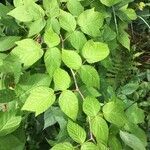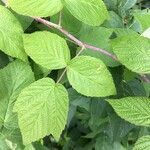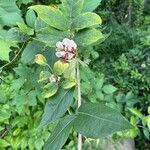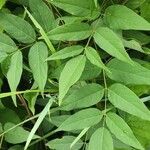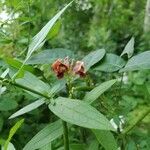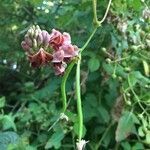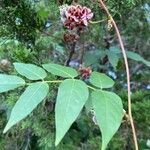A herb. It is a twining vine. It grows 3-4 m long. The leaves have 5 to 7 leaflets. The flowers are in the axils of leaves. The flowers range from pink to purple. They are in long racemes. The tubers are 5 cm long and form on the rhizomes. They are 5-8 cm below ground.
